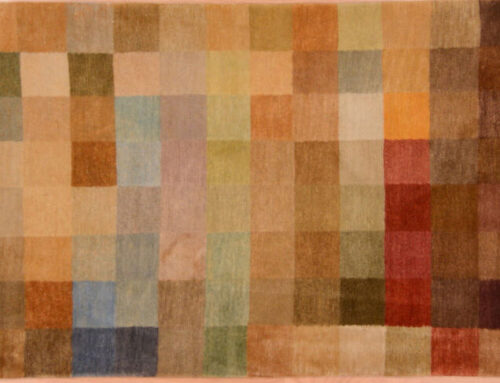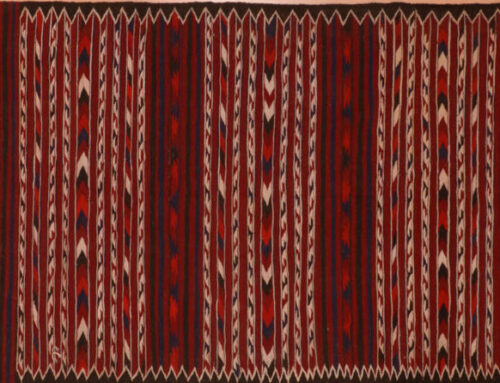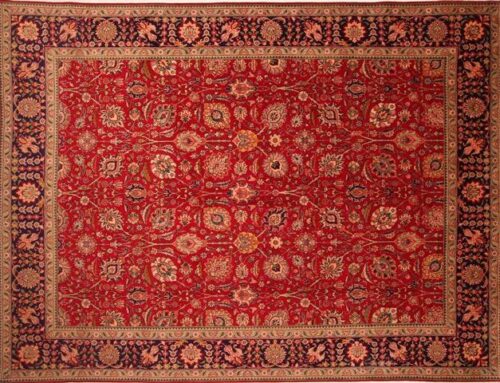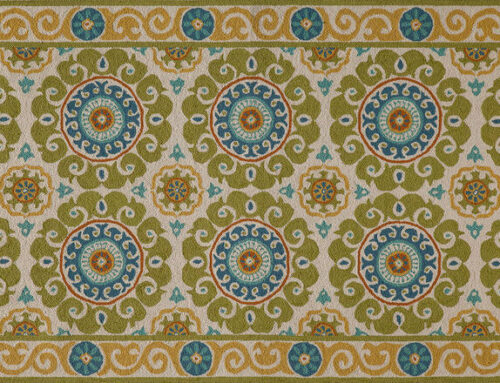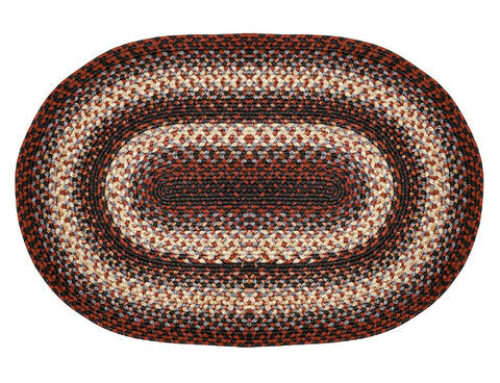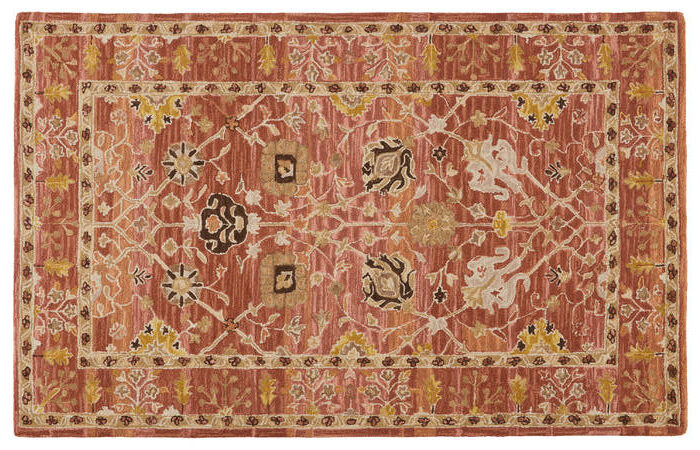
A bed cover with an asymmetrically knotted linen pile was found in the tomb of Kha and dated to 1400 b.c.e. Cut pile rugs were woven in Egypt as early as the pre-Islamic period, in the sixth century. Heavy tapestry weaves were produced in Fustat in the ninth century. The greatest period of Egyptian carpet weaving was during the reign of the Mamluks, when brightly colored rugs with complex geometric designs were woven in Cairo beginning in the latter part of the fifteenth century.
In the sixteenth century, after the Turkish conquest (1517), rugs were woven in Cairo in Ottoman designs. By the late seventeenth century knotted rug production had all but disappeared. Due to limitations on imports, knotted rug production began again in the 1950s.
Characteristics of Egyptian Rugs
-
Material and Knots
Knot counts in contemporary Egyptian rugs are expressed as 4 x 5, where the first number is knotted per centimeter weftwise and the second number is knotted per centimeter warpwise. Thus, 4 x 5 is 20 knots per square centimeter.
-
Design and Pattern
These rugs are made in Persian, Turkish, and Caucasian designs.1


